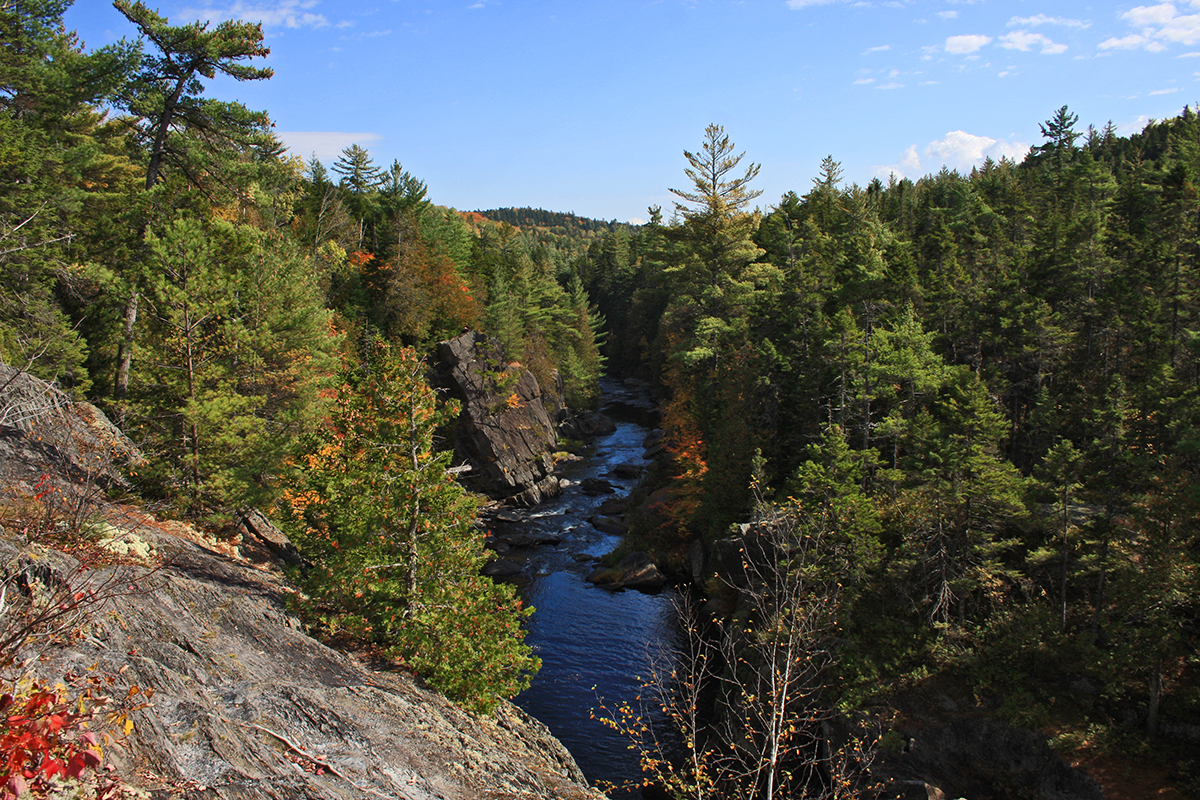Federal Bill Gives a Boost to Climate and Conservation

On August 16, President Biden signed the Inflation Reduction Act into law. This landmark legislation includes $369 billion in climate and energy investments, and it puts the U.S. on the path to become a global leader in reducing climate change. The Inflation Reduction Act includes funding and tax incentives for a number of important climate, conservation, and environmental programs. Many of these programs will help reduce emissions, which AMC has also committed itself to doing.
One of the many important components of the bill, the Forest Legacy Program, is slated to receive a $700 million boost over the next decade. This program keeps forests as forests, one of the most effective ways to combat climate change. This proven tool has already helped ensure many of the places we love to recreate remain available for future generations. Here are the basics on the program.
What is the Forest Legacy Program?
The Forest Legacy Program is a federal program run by the United States Forest Service that identifies and conserves important forest areas that are at risk of conversion to non-forest uses. The program was created as part of the Farm Bill passed by Congress in 1990.
How does it work?
In partnership with state agencies, the Forest Service works to identify and protect environmentally important forest areas. States are able to create their own criteria to best meet local needs. The program uses two techniques to conserve land. The first is outright purchase. The second, and more common,—is through the use of conservation easements. A conservation easement maintains private ownership of land but requires the owner to keep their land as a forest, which protects habitat, absorbs carbon, and contributes to the economy.
How much does the Forest Legacy Program typically spend?
In federal fiscal year 2022, the Forest Legacy Program funded $88.8 million in conservation efforts. This included land in Maine, Vermont, and New Hampshire. Since its founding in 1990, the program has permanently conserved over 2.8 million acres of forest land. An interactive map of the projects may be found here and illustrates the importance of the program to areas served by AMC. This includes land that AMC has advocated for, like the Katahdin Ironworks and Northeast Connection.
Why is the program important?
Protecting privately-owned forests has many benefits for recreation and conservation. First and foremost, it protects the environmental integrity of existing protected lands, as the selected properties are often abutting or near National Forests or other protected lands. Second, it supports forestry and helps preserve jobs in the timber industry, jobs that have been central to many families for generations. And finally, the program helps to ensure that traditional fishing, hiking, and camping opportunities remain available for generations to come.
Are there other environmentally-significant measures in the Inflation Reduction Act?
Yes. The bill contains a number of important measures with which AMC has long been involved and in which our members are interested. These include additional funding for the Urban and Community Forest Assistance Program and clean energy incentives. A full summary may be found here.
Program Listing
The Inflation Reduction Act contains a number of exciting initiatives that align closely with AMC’s environmental and conservation priorities. These include:
Forest Protection and Re-Greening to mitigate the impacts of climate change:
- $700 million for the Forest Legacy Program over ten years.
- $1.5 billion for Urban & Community Forestry Assistance Program/urban tree planting.
Consumer Incentives to reduce greenhouse gas emissions in efforts toward net zero:
- $4,000 consumer tax credit for lower- and middle-income individuals to buy used clean vehicles and up to $7,500 tax credit to buy new clean vehicles.
- Extended consumer tax credits for residential clean energy expenses including rooftop solar, heat pumps, and small wind energy systems.
Production incentives to reduce greenhouse gas emissions:
- Production tax credits to accelerate U.S. manufacturing of solar panels, wind turbines, batteries, and critical minerals processing.
- New grants and loans to help companies rein in their methane gas emissions.
- Tax incentives for building highly efficient new homes and commercial buildings, including extra incentives for “zero-energy-ready” homes and buildings.
Investments to move toward greater equity and justice in environmental benefits. Environmental justice components include, but are not limited to:
- $3 billion in Neighborhood Access and Equity Grants to support neighborhood equity, safety, and affordable transportation access with four competitive grants. These grants aim to: reconnect communities divided by existing infrastructure barriers, mitigate negative impacts of transportation facilities or construction projects on disadvantaged or underserved communities, and support equitable transportation planning and community engagement activities.
- More than $3 billion for air pollution monitoring in low-income communities
- $3 billion in grants to reduce air pollution at ports.
- $1 billion for clean heavy-duty vehicles, like school and transit buses and garbage trucks.
- Clean energy tax credits, bonuses, or set-asides designed to drive investments and economic development in disadvantaged communities.




